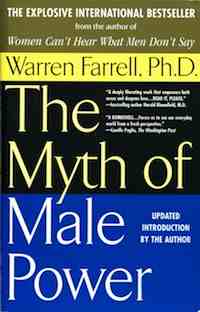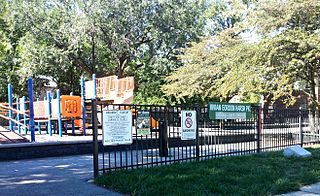
Patricia Campbell Hearst is the granddaughter of American publishing magnate William Randolph Hearst. She first became known for the events following her 1974 kidnapping by the Symbionese Liberation Army. She was found and arrested 19 months after being abducted, by which time she was a fugitive wanted for serious crimes committed with members of the group. She was held in custody, and there was speculation before trial that her family's resources would enable her to avoid time in prison.

Winnetka is a village in Cook County, Illinois, United States, located 16 miles (26 km) north of downtown Chicago. The population was 12,475 as of the 2020 census. The village is one of the wealthiest places in the United States in terms of household income. It was the second-ranked Illinois community on Bloomberg's 2019 Richest Places Annual Index.

Richard Benjamin Speck was an American mass murderer who killed eight student nurses in their South Deering, Chicago, residence via stabbing, strangling, slashing their throats, or a combination of the three on the night of July 13–14, 1966. One victim was also raped prior to her murder. A ninth potential victim, student nurse Corazon Amurao, survived by hiding beneath a bed.

Laurie Strode is a character from the Halloween series. She first appeared in Halloween (1978) as a high school student who becomes targeted by serial killer Michael Myers, in which she was portrayed by Jamie Lee Curtis. Created by John Carpenter and Debra Hill, Laurie appeared in nine of thirteen films in the series. The character has subsequently been represented in various other media, including novels, video games, and comic books.

Belle Gunness, born Brynhild Paulsdatter Størseth, nicknamed Hell's Belle, was a Norwegian-American serial killer who was active in Illinois and Indiana between 1884 and 1908. Gunness is thought to have killed at least 14 people, while some sources speculate her involvement in as many as 40 murders making her one of the most prolific female serial killers in history. Gunness seemingly died in a fire in 1908, but it is popularly believed that she faked her death. Her actual fate is unconfirmed.

Locked Rooms is the eighth book in the Mary Russell series by Laurie R. King. It was published in 2005. Unlike King's previous Mary Russell novels, Locked Rooms is split into 5 separate "books". The books alternate between the familiar Mary Russell first-person narrative and a third-person narrator following Sherlock Holmes. The events of the novel follow directly that of The Game.
Crime in Chicago has been tracked by the Chicago Police Department's Bureau of Records since the beginning of the 20th century. The city's overall crime rate, especially the violent crime rate, is higher than the US average. Gangs in Chicago have a role in the city's crime rate. The number of homicides in Chicago hit a 25-year high in 2021.

The Northern Illinois University shooting was a school shooting that took place on Thursday, February 14, 2008, at Northern Illinois University (NIU) in DeKalb, Illinois. Steven Kazmierczak, 27 years old and a 2006 NIU graduate, opened fire with a shotgun and three pistols in a crowd of students on campus, killing five students and injuring 17 more people, before fatally shooting himself.

The Myth of Male Power: Why Men are the Disposable Sex is a 1993 book by Warren Farrell, in which the author argues that the widespread perception of men having inordinate social and economic power is false, and that men are systematically disadvantaged in many ways.

Gera-Lind Kolarik is an American journalist, playwright and best selling author of true-crime books. Her work has been included television appearances on Maury Povich, Phil Donahue, 48 Hours, Inside Edition. Kolarik founded Evidence Video, a Chicago-based video production company that assists attorneys in personal injury and workers compensation cases.

James Eagan Holmes is an American mass murderer responsible for the 2012 Aurora theater shooting in which he killed 12 people and injured 70 others at a Century 16 movie theater on July 20, 2012. He had no known criminal background before the shooting occurred. Before the shooting, Holmes booby-trapped his apartment with explosives, which were defused one day later by a bomb squad.

The murder of Hadiya Pendleton occurred on January 29, 2013. Pendleton, a 15-year-old girl from Chicago, Illinois, was shot in the back and killed while standing with friends inside Harsh Park in Kenwood, Chicago after taking her final exams. As a student at King College Prep High School, she was killed only one week after performing at events for President Barack Obama’s second inauguration. First Lady Michelle Obama attended the funeral for Pendleton in Chicago.
The Oakland Elementary School shooting was a school shooting in 1988 in Greenwood, South Carolina, United States, in which 19-year-old James William Wilson Jr. shot and killed two students and wounded seven other students, a teacher, and a gym coach at Oakland Elementary School. He shot people in the cafeteria and in a classroom. Wilson had a history of mental illness.

On July 23, 2015, a mass shooting occurred at the Grand 16 movie theater in Lafayette, Louisiana, United States. John Russell Houser, 59, opened fire during a showing of the film Trainwreck, killing two people and injuring nine others before committing suicide.
The Gage Park stabbings refers to the murders of six members of the Martinez family in 2016 in the Gage Park neighborhood of Chicago in the US.
State of Illinois v. Alice Wynekoop was a criminal case prosecuted in two trials, the first of which, in January 1934, was declared a mistrial because of the defendant's fragile health, and the second of which, in February–March 1934, resulted in a guilty verdict and a sentence of 25 years at the Oakdale Women's Reformatory in Dwight, IL. The defendant was Alice Wynekoop, a well-known and respected physician, civic leader, and lecturer who, living and practicing in Chicago, IL, specialized in the health and welfare of children. She was charged with the murder of her 22-year-old daughter-in-law, Rheta Gretchen Gardener Wynekoop, of Indianapolis, IN, who on November 21, 1933 was found on the examination table in Wynekoop's surgery, deceased.

Hubert Geralds Jr. is an American serial killer who murdered five women between 1994 and 1995. He is serving his prison sentence, life without parole, in Menard Correctional Center, which is operated by the Illinois Department of Corrections. During his spree of murders he was known as the Englewood Strangler. Geralds is in custody under the identification number B39967. He was admitted to the Menard Correctional Center on January 16, 1998.

Kambium Elijah "Kam" Buckner is an American politician and attorney who serves as a Democratic member of the Illinois House of Representatives from the 26th district. The district, located entirely in Chicago, includes neighborhoods such as Bronzeville, Downtown, Gold Coast, and Hyde Park, among others. Buckner is the past chair of the Illinois House Black Caucus and current Assistant Majority Leader for the House Democratic Caucus. In college, he played football for the Illinois Fighting Illini football team as an offensive tackle and defensive lineman.

On July 4, 2022, a mass shooting occurred during an Independence Day parade in Highland Park, Illinois, United States. The shooting occurred at 10:14 a.m. CDT (UTC−05:00), roughly 15 minutes after the parade had started. Seven people were killed, and 48 others were wounded by bullets or shrapnel.

















